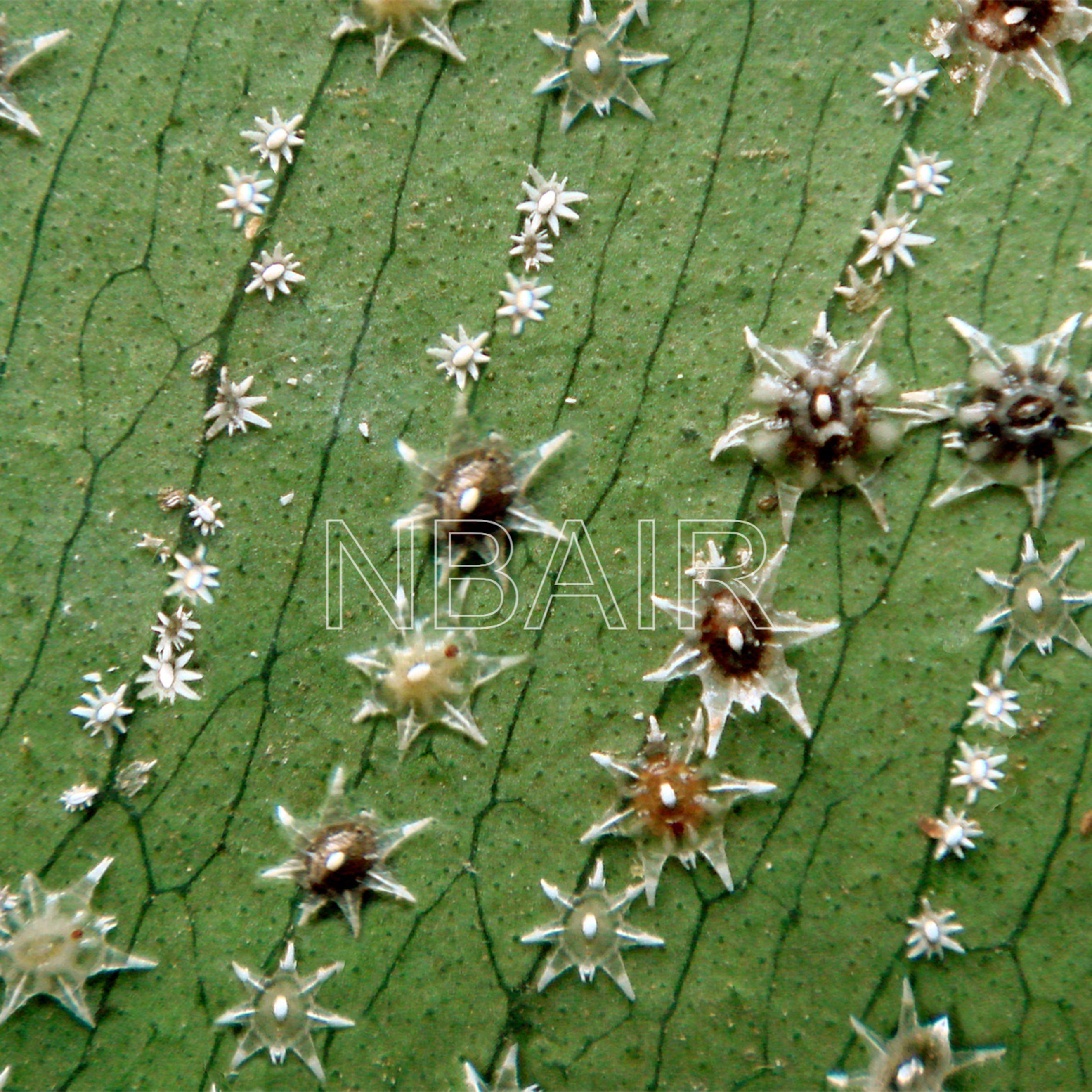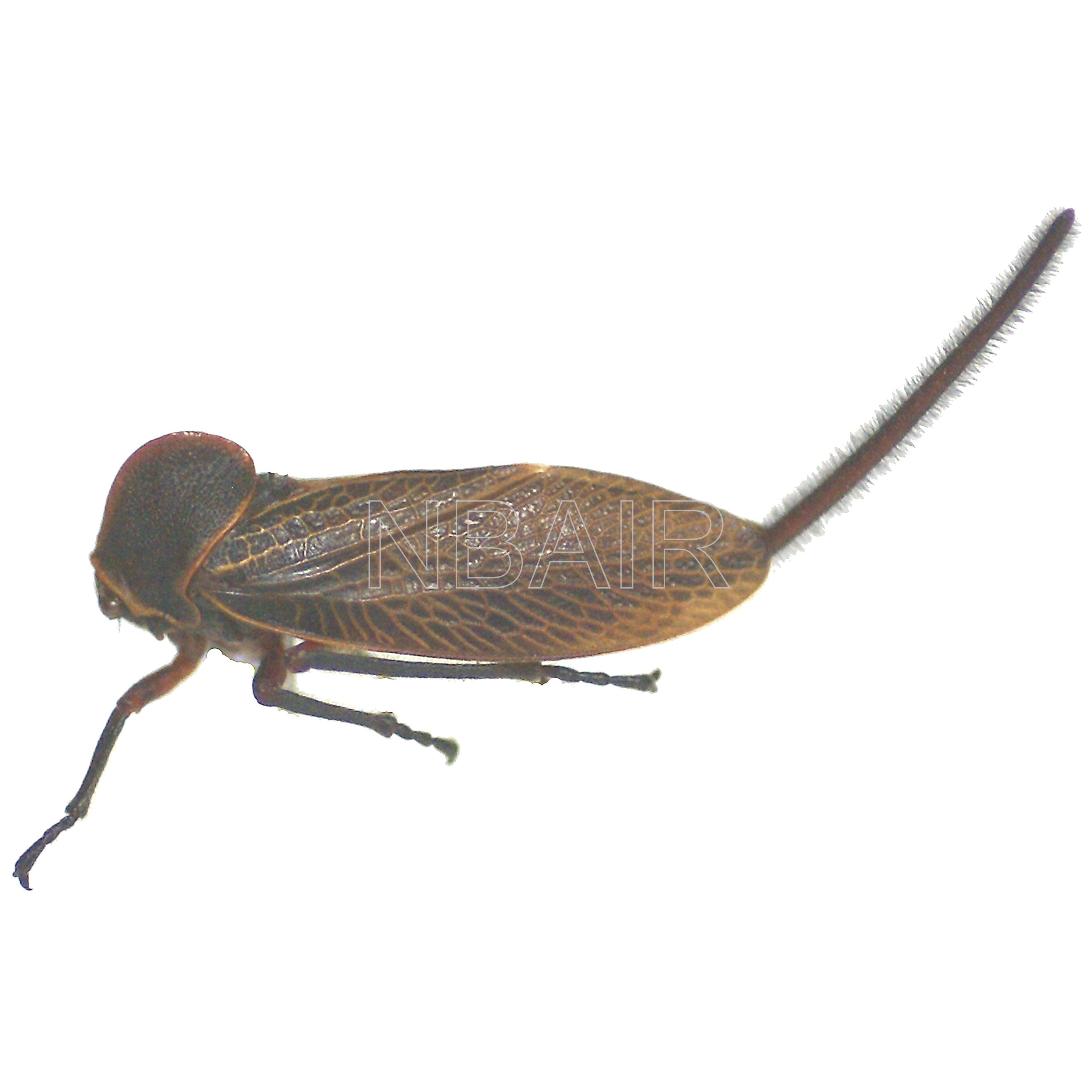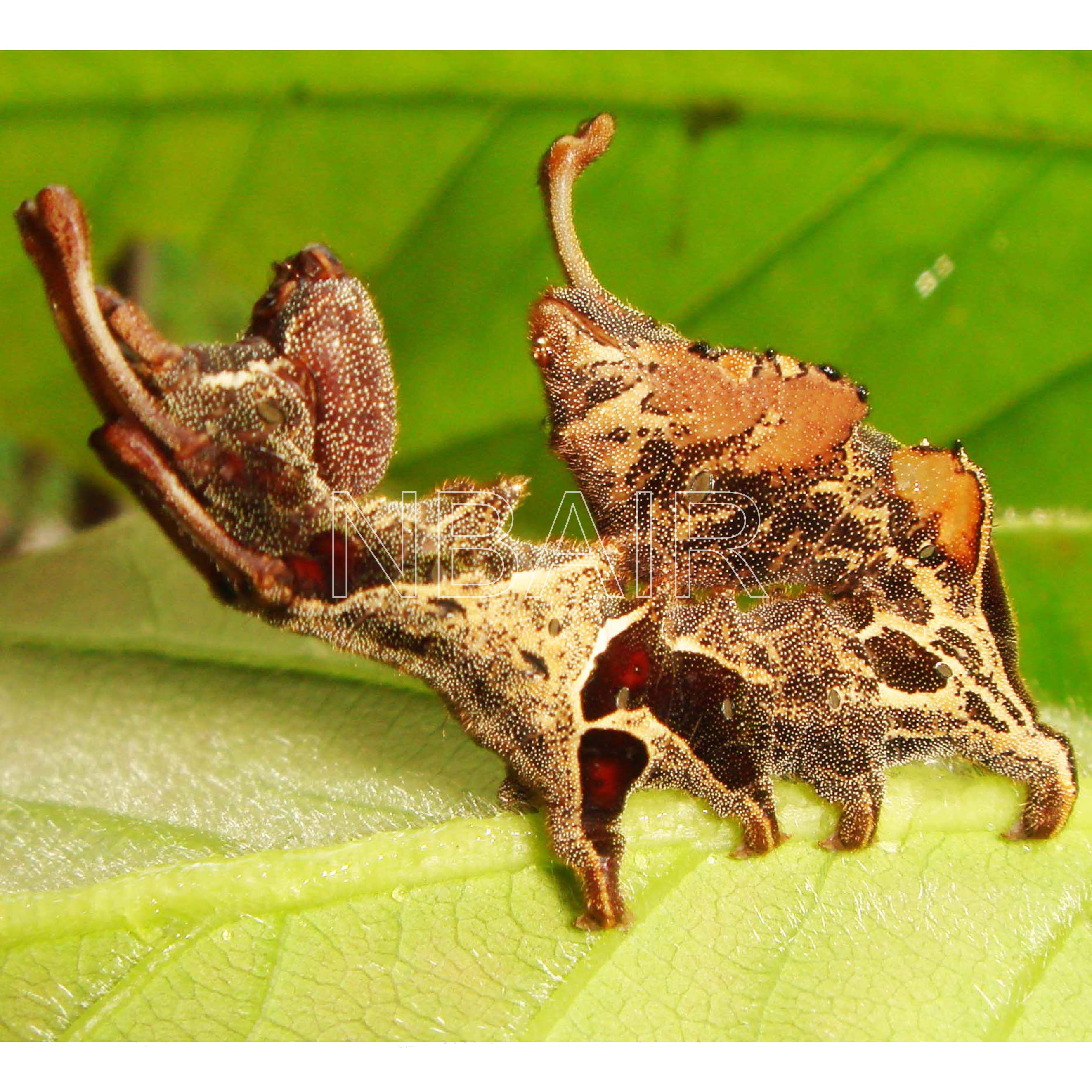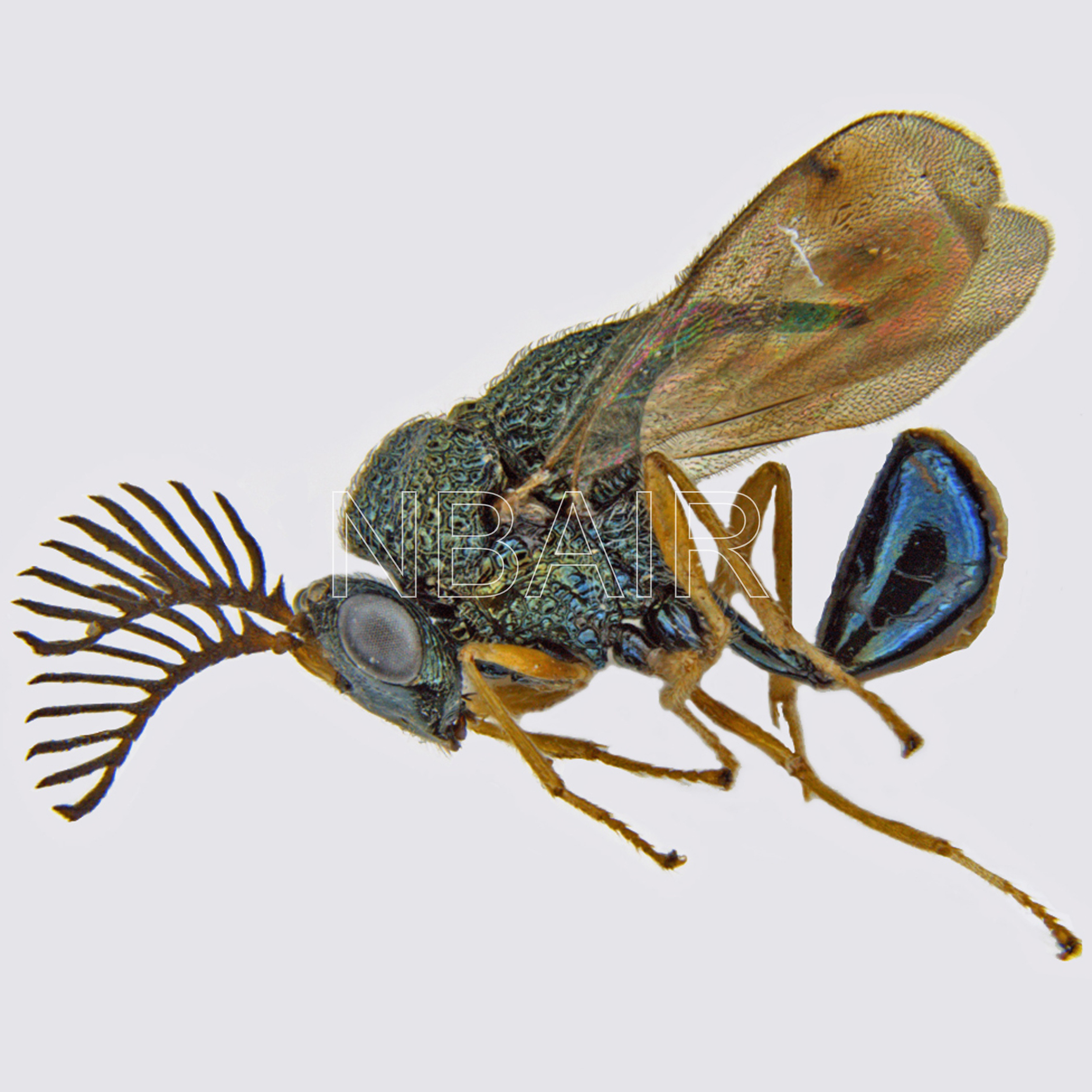Bizarre
Scientific name: Catacanthus incarnatus (Drury) Common name: Man-faced stink bug Comment: The man-faced stink bugs are bold multicolored (red, yellow, orange and cream) to warn predators. The weird face pattern is basically a defence mechanism with pseudo-eyespots distracting attention from the original and vulnerable side of head.
Scientific name: Ceroplastes stellifer (Westwood) Common name: Stellate scale Comment: Body with 6 or 7 radiating arms gives the appearance of a star fish, covered with transparent or slightly translucent wax. This species is tropicospolitan, polyphagous and is listed as a quarantine pest.
Scientific name: Darthula hardwicki (Gray) Comment: This membracid feeds on the sap of trees and herbaceous plant. When disturbed raises its tail in upright position.
Scientific name: Megapulvinaria maxima (Green) Comment: Megapulvinaria maxima attacks plants up to three or four years old. This species is dull ochreous when dry, shrivelled after gestation and doesn’t appear as an insect.
Scientific name: Neostauropus alternus Walker Common name: Lobster moth Comment: The newly hatched caterpillars mimic red ants. In the event of any risk the caterpillar poses a startling threat display position with its legs outstretched like claws and head bent backwards to scare the approaching predator. Usually they camouflage very well with the branches.
Scientific name: Rastrococcus mangiferae (Green) Common name: Mango shield scale Comment: This beautiful species is generally found in mango.
Scientific name: Schizaspidia andamanensis (Mani) Comment: Eucharitids are parasitoids of ants. The wasps acquire host ant species odour upon entry into the colony. Later they are fed and groomed by ants. By mimicking the odour of ant species, eucharitid wasps are able to stay in ant colony without aggression until the time they leave.








